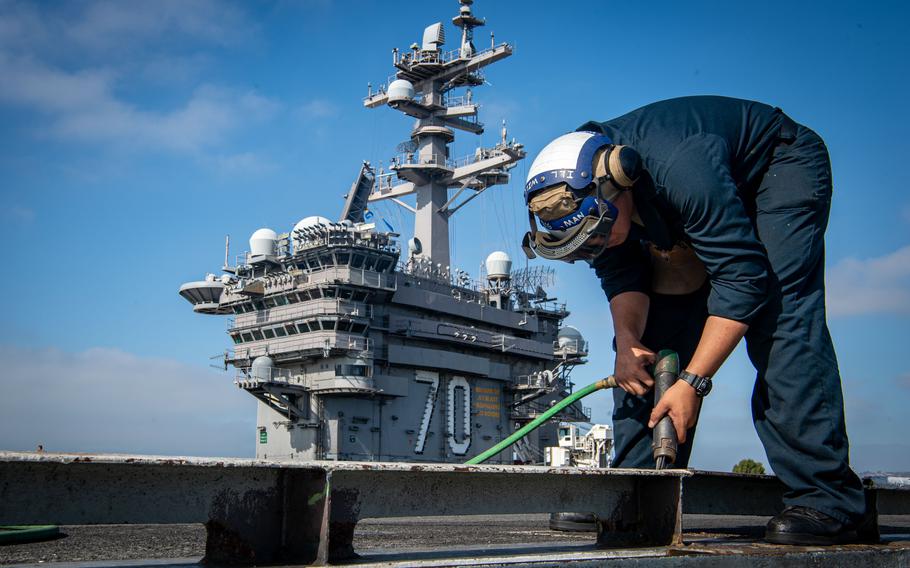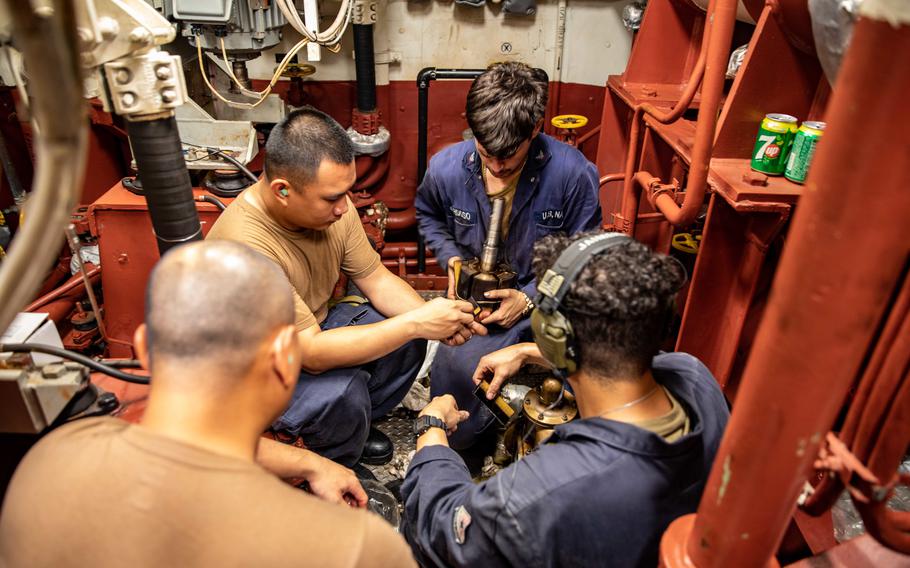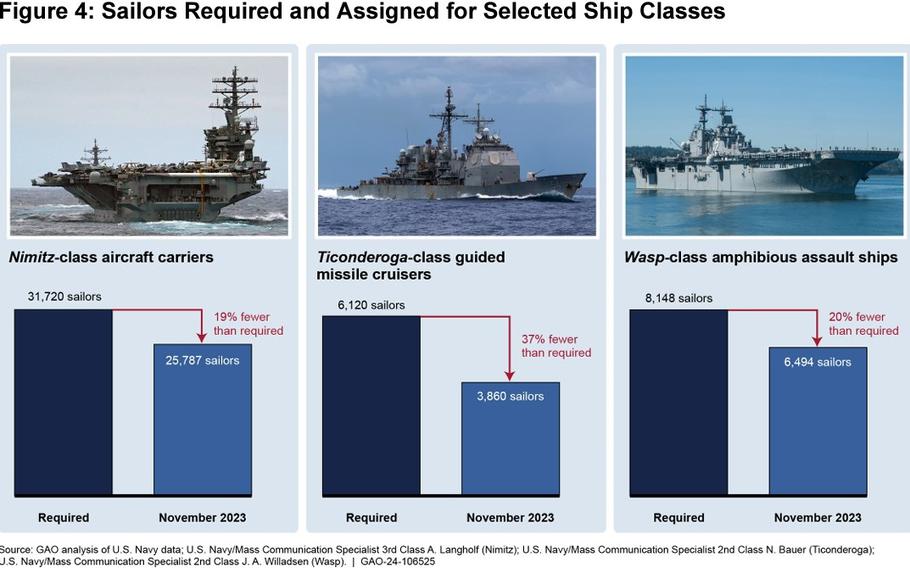
Seaman Keenan Williams, an aviation boatswain’s mate airman, does preventive maintenance on the flight deck of USS Carl Vinson Aug. 21, 2024. A government watchdog agency found that the Navy’s staffing and training are inadequate for routine maintenance and repairs on ships at sea. (Kenneth Ostas/U.S. Navy)
The Navy doesn’t have enough manpower and training to keep its ships in shape for combat, a government watchdog agency said after interviewing sailors across the fleet.
Most of the service’s surface ships, aircraft carriers and submarines are so short-staffed that they can’t complete regular routine maintenance and repairs at sea, according to a Government Accountability Office report released Monday.
That critical labor shortage is exacerbated by a lack of “in-depth and hands-on training for sailors in maintenance and repair techniques,” the GAO said.
“Sailor-led maintenance and repairs (are) the first defense against allowing small defects to become major material problems, which could affect ship operations and mission capability,” the report stated.
The review was conducted from January 2023 to September 2024 and included a survey of executive officers serving aboard more than 230 Navy ships and submarines.
Leadership interviews, discussions with sailors and analysis of the Navy’s personnel and maintenance requirements and other data also were part of the analysis.
The Navy uses sailors for many of the repairs and maintenance tasks needed while a ship is underway. More intensive or highly skilled work is completed at its homeport on return or at a centralized repair facility using a combination of sailors and contractors.

Sailors make repairs aboard the destroyer USS Halsey in the Arabian Sea in 2021. A government watchdog agency report found that the Navy's fleet is hamstrung by a shortage of manpower and training on ship maintenance and repair. (U.S. Navy)
The Navy needs 84,379 enlisted sailors to adequately man its fleet, the report stated. However, just 70,705 enlisted sailors, or about 16% less than required, were serving aboard its ships and submarines as of November 2023, the GAO found.
That manpower shortage is made worse because sailors who are assigned to a ship may not be available for duty due to factors such as illness or temporary assignment elsewhere.
That makes completing repairs while underway “moderately to extremely difficult,” 63% of executive officers surveyed by the GAO said. The agency noted that the Navy doesn’t track how many sailors are assigned to a ship but unavailable for duty.
The study also found widespread concerns that personnel weren’t prepared for their jobs, with those assigned to maintenance-heavy positions often less equipped than other crew members.
For example, the engineering departments of 19 of the 25 ships reviewed had some of the least experienced and skilled sailors.
As a consequence, “more capable sailors that perform a lot of maintenance get burned out and tired of taking up the slack for other sailors and leave the Navy to do the same work for better pay and working conditions,” one respondent said.
Sailors also expressed frustration that their training left them unprepared, especially when it came to troubleshooting problems.
“Sailors need hands-on maintenance training at schoolhouses working on live systems for maintenance and repairs,” one respondent told researchers. “Online or on-demand systems are not reliable, and bandwidth is constrained underway.”
The report also noted problems with the Navy’s use of outdated computer systems to plan, manage and order parts for needed work, further hindering repairs and maintenance.
The GAO made seven recommendations to address its findings, including that the Navy evaluate and optimize the balance between classroom and on-the-job training for junior sailors as the service implements a new instruction program.
The Navy also should periodically gather and report data specific to the number of sailors available for duty as it relates to maintenance and better track the experience and skill level of personnel across departments.
The Navy concurred with all recommendations, the GAO said.

Staff shortages for selected ship classes, according to a GAO analysis of U.S. Navy data. (Government Accountability Office)